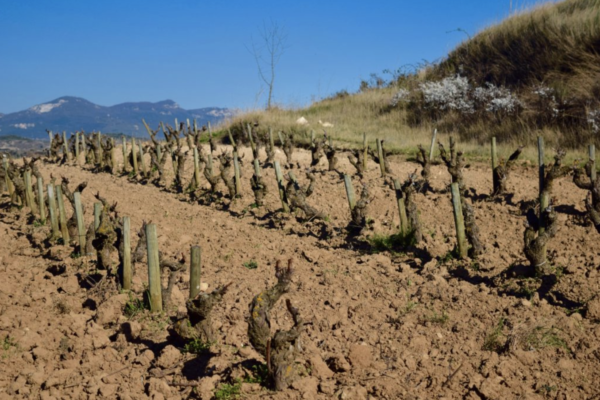¡Hola, Rioja!

Being a wino means planning your life around wines. Whenever you go to restaurants, you plan your meals around what you are drinking; when you travel, you make sure you do some wine activities. It was a no-brainer for me to add a wine tour when I made a trip to Spain this March. I was staying at San Sebastián (locals call it Donostia), for a few days with my friends, who were studying at the Basque Culinary Center. San Sebastian is not too far from one of the most important wine regions in Spain: Rioja.

I must say it’s not shabby that Rioja was the first old world wine country I’ve ever visited. Spanish wine is usually my go-to wines for its amazing value for its impeccable quality. Spanish wines have never disappointed me, always right on point. Compare to some wines from other countries, where I’ve experienced cork issues.
Rioja is only about 2.5 hours southeast from San Sebastián, but the climate was significantly different. San Sebastián in March was cold and damp, but Rioja was hot and dry. It felt like a California summer. Hot sun rays sting your skin, but you rarely sweat because it’s so dry. The winery experience was somewhat similar to Californian wineries, but, of course, different. It felt more rustic and untouched compared to California wineries, where they’re polished to the point of pomposity. Also, having worked at different wineries in the United States, I really appreciated that there were no bachelorette party group coming in drunk (oh, those rowdy peeps).
We toured two wineries, Muga and Viña Tondonia, in Spanish. They do provide English wine tours, but we booked the tour on the very last minute, so we only had the Spanish option. I don’t speak fluent Spanish, but fortunately, I’ve been to enough wine tours to get the gist of what they were saying. Muga and Viña Tondonia are very close together; you can easily walk to one another. Wines from Muga and Viña Tondonia are very similar to each other, but the styles are very different. I felt like Muga had more modern twist to it whereas Viña Tondonia is more of traditional style.

Muga:
€15 and you get a wine glass and tasting. Muga is a fairly large winery with very friendly staffs. The wine cellars are huge, and it felt similar to some modest Napa wineries.

Viña Tondonia:
€30 and you get a wine bottle and tasting. The winery felt very rustic, possibly because the very first wine cellar we toured was covered with damp white penicillin. It was dark and no photos were allowed in wine cellars.
After the wine tour, we grabbed a quick bite at a local restaurant in Haro before heading back to San Sebastián. Rioja was a lot drier and warmer than what I imagined it would be, and it all made sense how Rioja can taste so ripe and juicy. I left Rioja feeling very content; I’ve only heard and read about the region when I studied wine, but now I can visualize it when I drink or study Rioja!